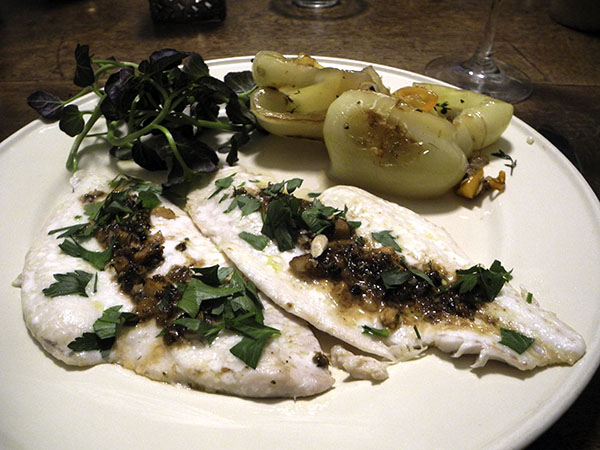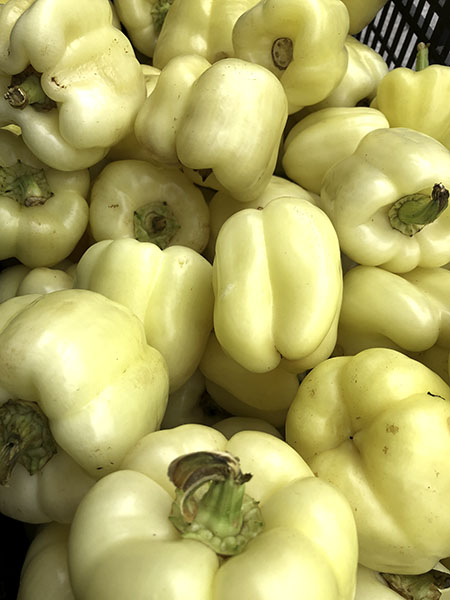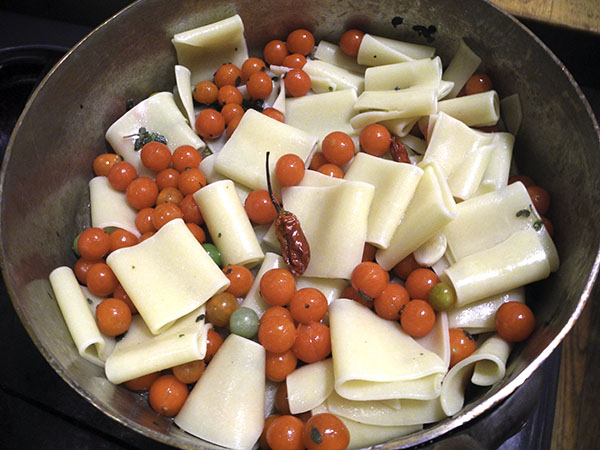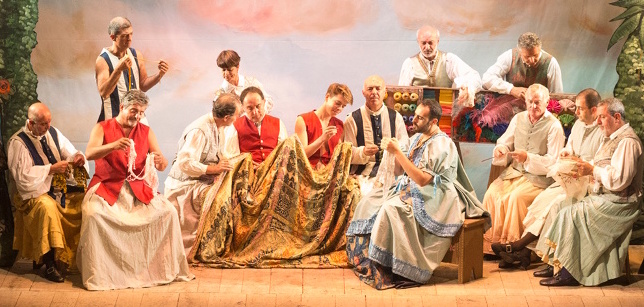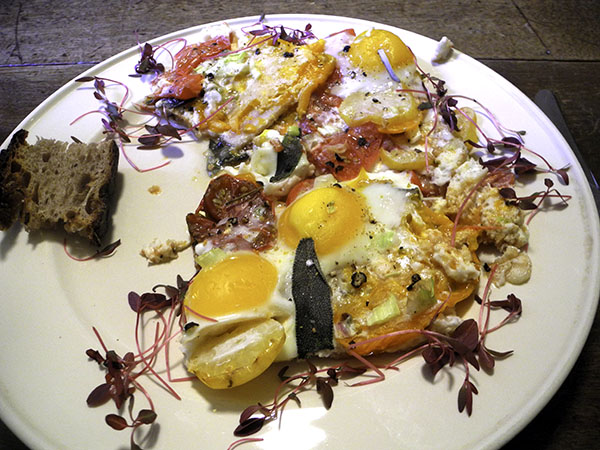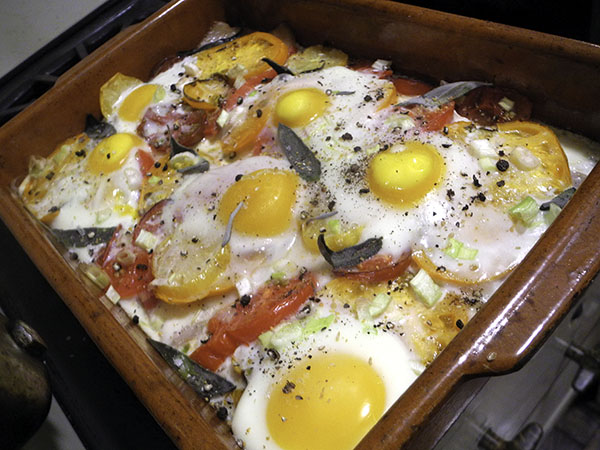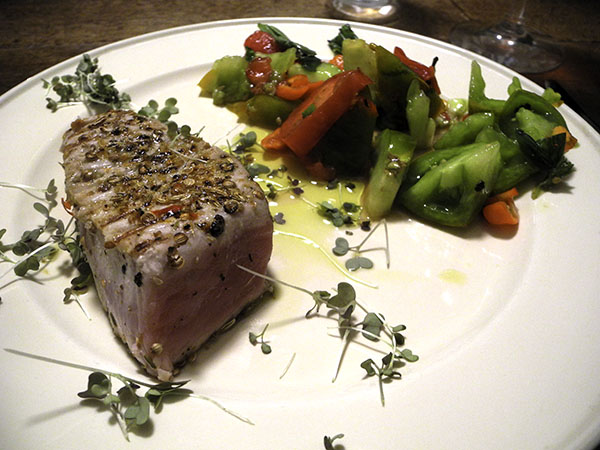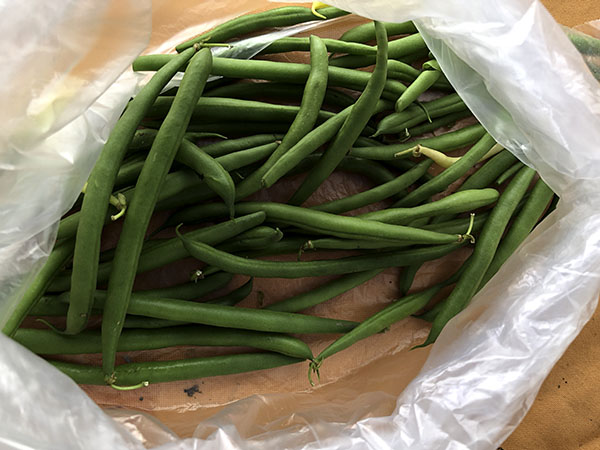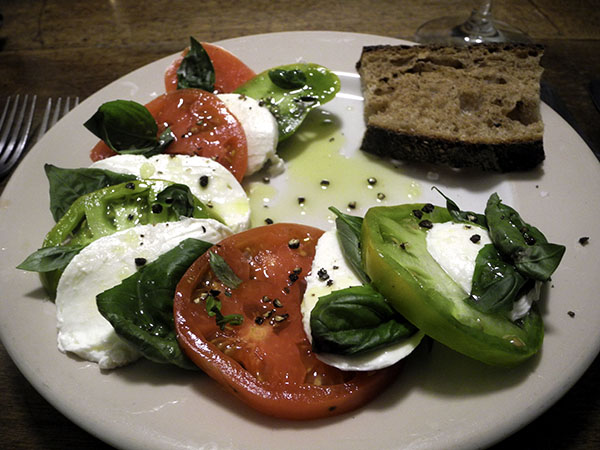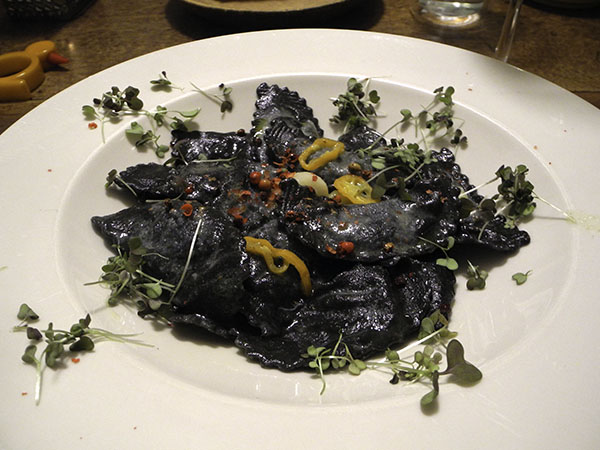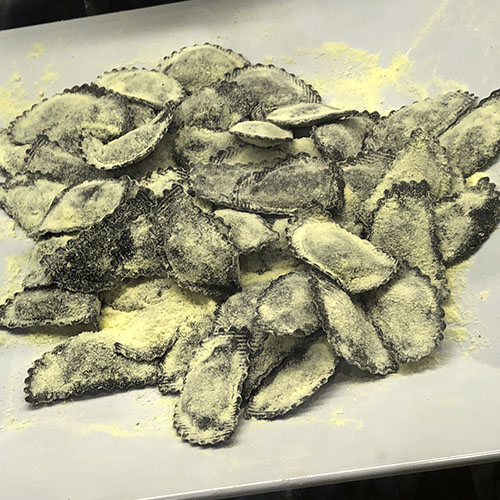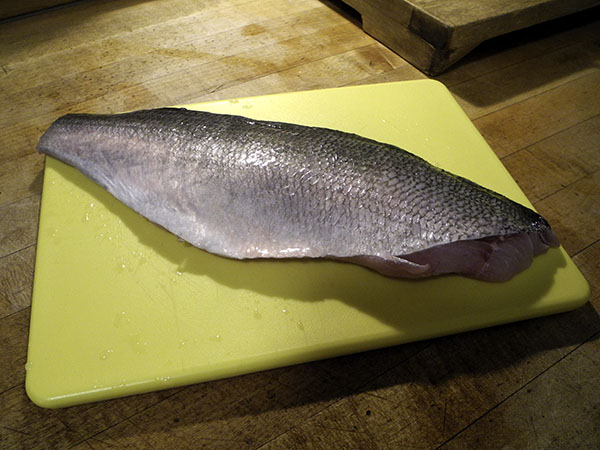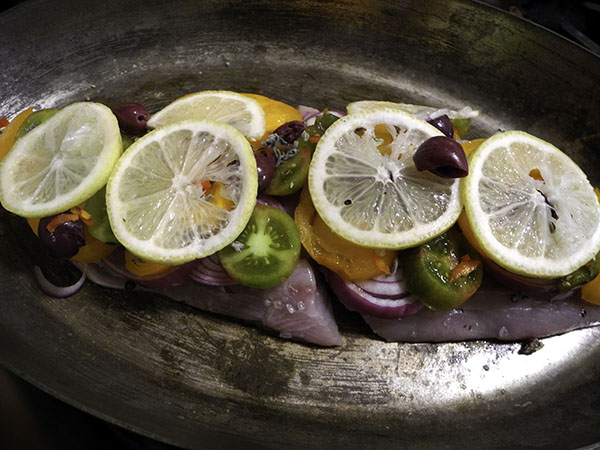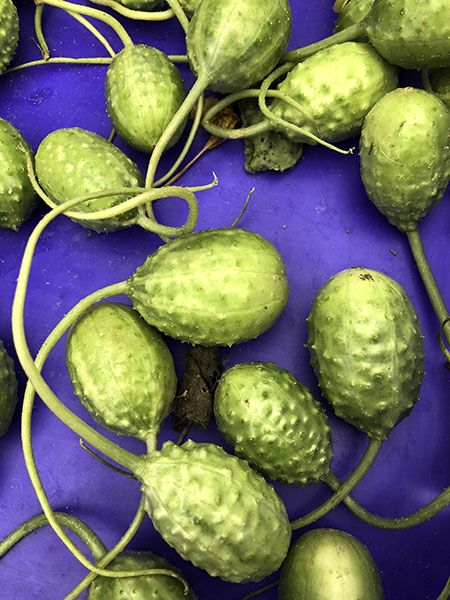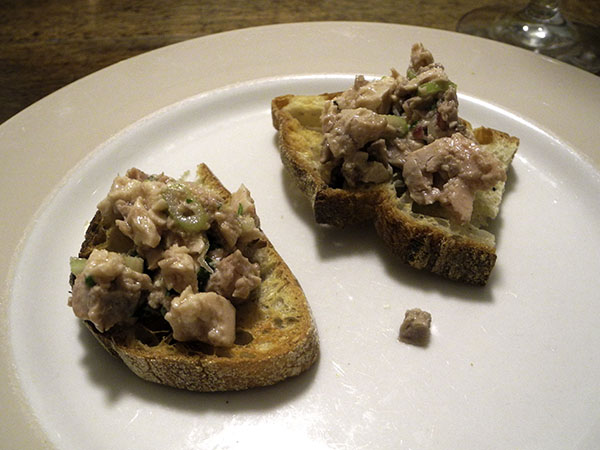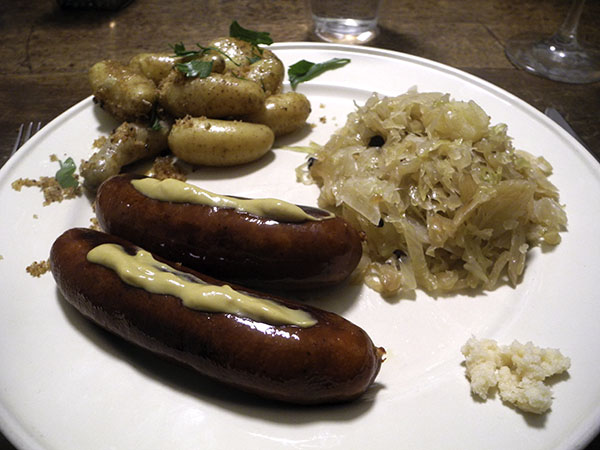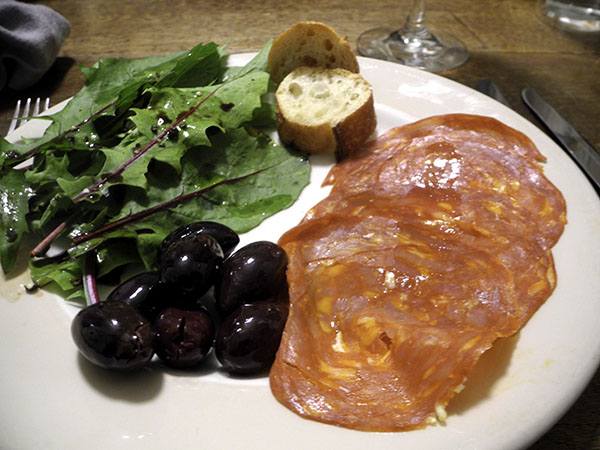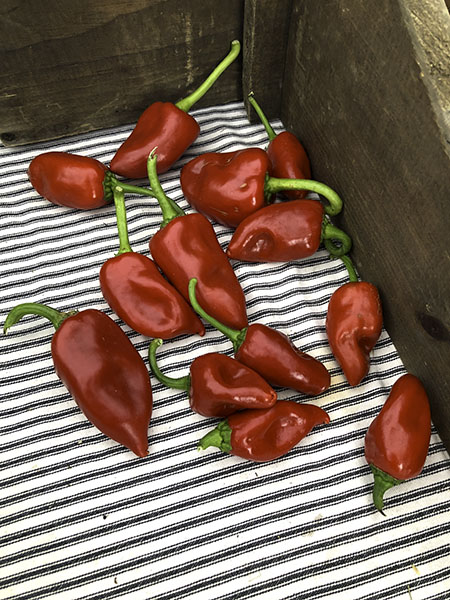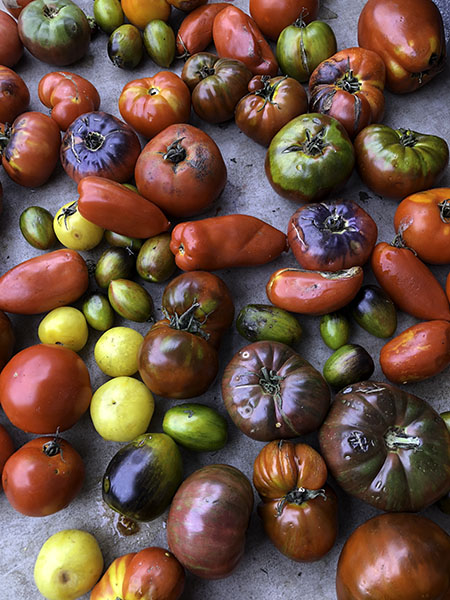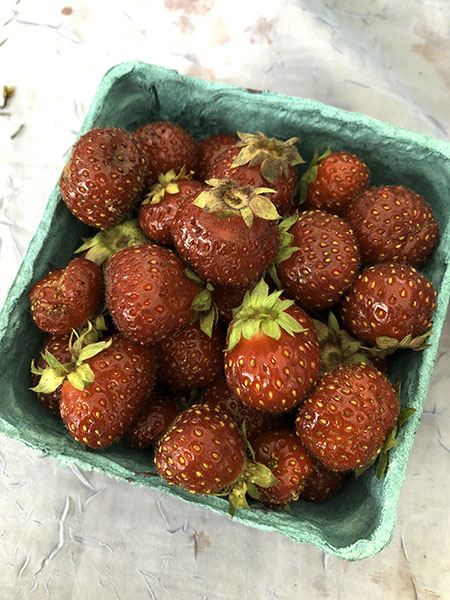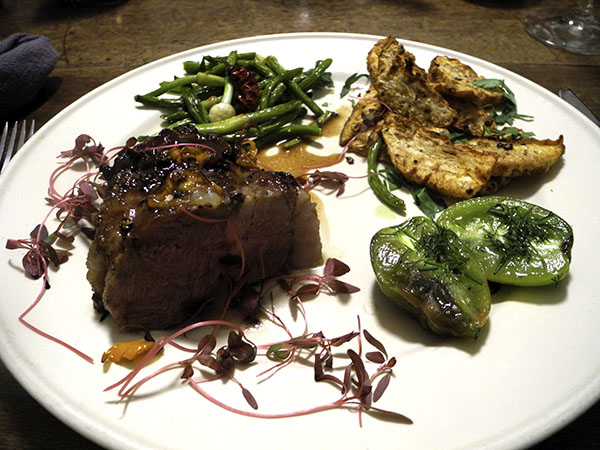
Even without the red micro amaranth garnish, this is clearly a ‘red meat’.
I was more than a little intimidated. I had been offered, and had purchased, a frozen Mangalitsa collar steak one week before, but I had no idea what to do with it. The breed of pig was very different from any known to most cooks today, and the cut was different from any at least that I knew.
The somewhat fascinating story of this breed of pig, was familiar to me, thanks to the auspices of New Amsterdam Market, and I had cooked Mangalitsa pork before, but I had no experience with this particular cut.
I think of them as Habsburg pigs, although their story is actually more interesting than that suggests, even if they’re not Lipizzaners.
The young man at the producers’ stand in the 23rd Street farmers market had given me some pointers, and by the time I had walked away with the steak I thought I had a pretty good idea of what I would do with it, but that lasted only until a few days ago.
I’m inclined to research, perhaps over-research, almost anything new I may be confronted with. I looked at the on-line entries for Mangalitsa, or, more importantly in this case, ‘pork collar steaks’. These 2 aspects of the subject I was investigating were never discussed combined, at least not in any useful way, and most of the time they were dealt with only separately, which only added to my confusion. I began to doubt I could cook them more or less the same way I’ve always handled good pork chops, but I had not come up with a satisfactory alternative.
The accounts that I did find on line also contradicted each other about the relative tenderness or toughness of the meat, both the breed and of the cut, and the recipes I saw were equally contradictory on that subject. Also, every one of them was also pretty elaborate, in both the ingredients proposed and the preparations described.
I was drawing a blank, so I went with what I knew, using my now-domestic classic lemon pork chop procedure, including the habanada option this time, but adjusting the cooking time for the steak’s greater thickness.
The result was an absolutely superb meat, and unlike any pork I had ever enjoyed. It’s appearance on the plate alone suggested it would be distinctive, which it certainly was. I didn’t think it was possible but it further enhanced my admiration for the recipe I had found in ‘Italian Two Easy: Simple Recipes from the London River Cafe’ 12 years ago, and it was probably the most exciting of an extraordinary long, and continuing, run of lemon-braised chops I had been enjoying since.
I transcribed the recipe here, back in 2014.
Fortunately the 3 vegetables I accompanied it with were up to the same standard (3 because I had found that I didn’t have a sufficient amount of any one, or even 2, of them).
- one thick 13-ounce Mangalitza pork collar steak from the Mangalitsa stand in Chelsea’s Down to Earth Farmers Market on West 23rd Street (Mangalitsa will be there on 10/06, 11/10, and 12/01; the market closes December 15 and reopens early in May), brought to room temperature, thoroughly dried, seasoned with sea salt and freshly-ground black pepper, seared quickly on both sides, in fact on all sides, since the steak was almost 2 inches thick, inside a very hot heavy enameled cast-iron oval pan, one small, fresh floral-scented heatless orange habanada pepper from Campo Rosso Farm, thinly sliced, scattered on the top surface, followed by most of the juice from half of a Whole Foods Market organic lemon, placed inside a 425º oven for a total of about 21 minutes, flipped over halfway through, the habanada slices collected first and repositioned on the the new top surface, the lemon squeezed over it again, and again replaced in the pan, the finished steak removed from the oven when done, halved, arranged on 2 plates, garnished with red micro amaranth from Two Guys from Woodbridge, the pan juices, deglazed with a tablespoon or two of the dinner wine, poured over the top of the steaks, the remainder of the rich sauce poured into a glass sauce boat which was placed on the table for access later on

- one 10-ounce fresh early-season celery root (celeriac), with greens attached, although I did not use them in this meal, from Lucky Dog Organic Farm, scrubbed, trimmed, peeled, cut into narrow wedges little more than 1/4 to 1/2″ at the thick end, tossed inside a bowl with olive oil, a quarter teaspoon of Safinter Pimenton de la Vera smoked picante paprika, sea salt, and a little freshly-ground black pepper, spread onto a large Pampered Chef unglazed ceramic pan, and roasted at 425º until brown and cooked through, or about 30 minutes, removed to the plates and sprinkled with chopped parsley from Alex’s Tomato Farm in the 23rd Street farmers market
- two small green heirloom plum tomatoes, halved, warmed inside a small copper pan in a little olive oil, seasoned with salt and pepper, sprinkled with a little chopped dill, also from Alex’s Tomato Farm
- a handful or so of garlic scapes from Berried Treasure Farm, washed, dried, trimmed at either end, cut into one or 2-inch lengths, sautéed over a low to moderate flame in a tablespoon or so of Whole Foods Market house Portuguese olive oil inside a medium antique high-sided copper pan until softened, seasoned with salt and pepper
- the wine was an Italian (Alto Adige/Südtirol) white, Kerner, Castelfeder 2016, from Astor Wines
- the music was the album, ‘Corelli: Concerti Grossi Op. VI’
